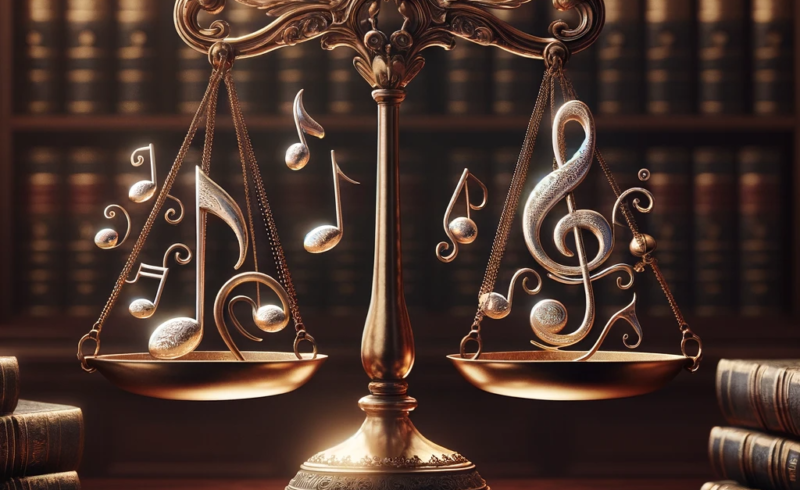
I’ve been paying attention to this case while waiting for significant shoes to drop in a bunch of others. This court is making decisions that will turn into raised points in the others.
An amicus by Bryan Frye (my friend, let me divulge) throws a friendly wrench into this one. And I think it’s important.
Again, there are approximately fifty lawsuits at various stages involving artificial intelligence models that were trained on copyright-protected works, and in some cases, likely on nearly the entire internet. And University of Santa Clara’s Professor Edward Lee keeps track of them all for us if you care to dive. For the most part, all these courts have so far punted on the big question — whether “training” on copyrighted materials constitutes infringement.
The first case to head down that road is Thomson Reuters v. ROSS. Ross trained its AI on Thomson Reuters’ Westlaw product, and when the court ruled against Ross’s fair use defense, I landed for the most part back on the square I’m reluctant to yield — that copyright is a function primarily of the substantial similarity of the outputs and not the inputs. Copyright infringement logic is not quite linear but has a directionality. As a musicologist I like to illustrate that directionality, and thus the failure of the so-called “inverse ratio rule,” as a rule at least, by pointing out that my almost infinite familiarity with the song “Happy Birthday To You” does not say anything about its significant similarity to the next song I compose. Unless I output “Happy Birthday To You” or something very close to it, there’s no need to consider the question of whether I employed it even microscopically in my next creation.
But Professor Frye finds a simpler reason the court in Thomson Reuters v. ROSS is wrong. He sets aside the question of Ross’s use and argues that when the US District Court for the District of Delaware found Westlaw’s headnotes to be to some extent protectable, it was wrong –they’re not protectable at all. And if Frye is correct, then the question of whether training on them infringes is obviously moot.
Once upon a time, Michelangelo supposedly humblebragged, “I saw the angel
in the marble and carved until I set him free.”2
The District Court likens West’s
editors to Michelangelo, finding that they carve headnotes from the raw stone of
judicial opinions. But Reader’s Digest is a better analogy, because West is in the
business of condensing judicial opinions for the benefit of busy lawyers.
– Brian L. Frye, Professor of Law at the University of Kentucky Rosenberg College of Lawhttps://papers.ssrn.com/sol3/papers.cfm?abstract_id=5225271
Frye’s opinion puts the district court and Westlaw itself in a bind. The court’s finding that a non-zero amount or number of the headnotes are copyrightable led to the use being infringing. I could never write amicus briefs because, well, I’m not a legal scholar, and because I can’t be bothered citing. Look up Feist yourself. It’s applicable to a great extent and probably the most cited IP case there is. It’s the phonebook case. ANYWAY, Feist establishes that ideas and facts cannot be protectable. As Professor Frye puts it, Westlaw headnotes to an opinion are, at most, “intended to state a fact about the content of that opinion.” And to editorialize, as I perhaps wrongly assumed they do when I first read the decision, would be to involve creativity and therefore originality. If Westlaw editorializes, perhaps then we have a question of originality and therefore protectability.
Does Westlaw want that question asked? Isn’t their purpose specifically to accurately reflect the facts? And if so, isn’t that necessarily at the deliberate exclusion of anything but the facts?
It gradually becomes more circular, but if West’s headnotes were some sort of protectable facts, then it monopolizes, and prevents others from describing court opinions.
Professor Frye also gets to my holdout thought — that, sure, the individual facts and their recounting probably can’t be protectable, but the collection has a degree of organization and curation, and taken as a whole is a protectable presentation. Whether we give this a name like “selection and arrangement” doesn’t really matter. It doesn’t make the individual elements any more protectable though at some level, the presentation is. Frye says the decision does just that — it suggests that the individual elements inherit some protectability illogically from the protectability of the whole.
While the Copyright Office registered the West Key Number System, it has
https://papers.ssrn.com/sol3/papers.cfm?abstract_id=5225271
never independently registered any of West’s headnotes. And it would never
independently register West’s headnotes, because they are uncopyrightable short
phrases.
– Brian L. Frye, Professor of Law at the University of Kentucky Rosenberg College of Law
It’s no small thing if you’re any of these fifty defendants. If this opinion is wrong, then we have not, or at least should not, have started down a road where fair use would’ve taken its first hit.
None of this has much to do with music specifically of course, but AI is the biggest question in music copyright too.
Musicologists are music experts and not lawyers, but the forensics are largely about the legalities involved so the law provides context when I consider where “substantial” and “significant” similarity lead to a finding of legal or even merely moral wrongdoing. The legalitlies don’t change the notes, but the findings need to inform the legal questions and assist in arriving at a correct result — truth, if you will. It’s good to be reminded, amicably, that court decisions are opinions, and might be wrong.